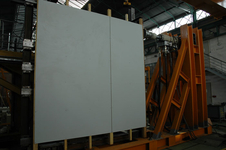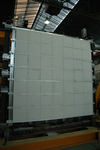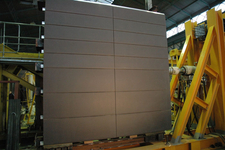Cladding under seismic loads
The improvement of scientific knowledge and changes to earthquake regulations across Europe has led to a new breakdown of the map of France, to represent stricter observed levels and increase the size of some zones. New European earthquake-resistant construction standards EC8 (Eurocode 8) will be applied as a function of this zoning. CSTB studied add-on cladding systems and their behaviour under earthquakes between 2003 and 2006. Three years of research resulted in a protocol which led to the first assessment tests in the framework of a Technical Assessment. Almost 60 add-on cladding processes have been assessed on this platform since then.
CSTB developed the test platform. Earthquake phenomena can be broken down into three distinct simple loads, and a separate test can be carried out on the test platform for each load. The first test consists of deforming the support to which the cladding is added on into a parallelogram shape, by applying a monotonous increasing deformation of the model support, followed by a cyclic loading phase. The other tests consist of applying loads to the test piece by generating an acceleration of the support to which the cladding is added on at a specific frequency and amplitude. The orientation of the load may either be perpendicular or parallel to the plane of the support.
For the moment, only add-on cladding can be assessed. "Our range of skills is now being broadened to include other products. Research work is ongoing to test a wider variety of construction processes to determine the resistance of buildings to earthquakes, for example such as sandwich panels and glass façades," explains Philippe Rivillon, CSTB engineer.
The future protocol will be validated by exploratory experiments and the Specialised Group concerned, so that final assessment processes can be set up.




